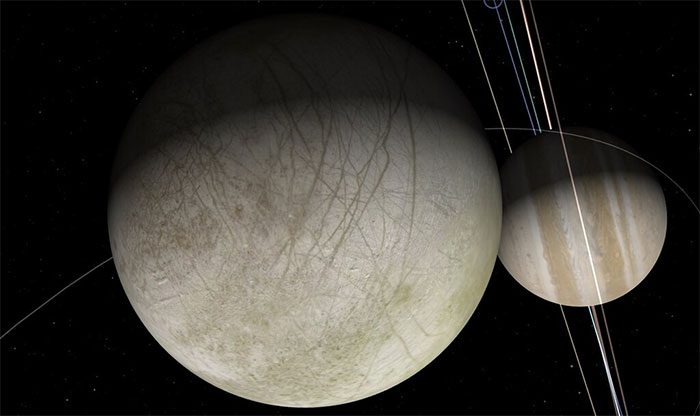NASA is conducting a project to send information into space called “Message in a Bottle.”
In 2024, a new spacecraft named Europa Clipper will embark on a mission to explore Jupiter’s moon Europa to investigate its potential for supporting life. What makes this project special is that in addition to high-tech sensors, the spacecraft will carry the names of hundreds of thousands of people and a unique poem.
NASA has a history of sending meaningful messages and works of art into space with the hope that extraterrestrial beings may find them. The most famous of these is the “golden” disc carried by the Voyager spacecraft in the 1970s. These discs include images, sounds, music, and greetings spoken in 55 languages. Currently, a new project called “Message in a Bottle” is being undertaken by NASA in a similar spirit.
NASA is inviting everyone to participate in its new plan to send messages into space. Those who wish to leave their mark on a distant moon of Jupiter only need to submit their names to NASA before October 2024. These names will be sent into space on the Europa Clipper spacecraft, which is expected to enter Jupiter’s orbit in 2030.
Europa, one of Jupiter’s 95 moons, was chosen for this mission because it is believed to have energy sources and liquid water, creating ideal conditions for life. Although Europa’s surface is covered by a layer of ice, research indicates that beneath this surface lies a vast ocean of liquid water along with chemical activities that could create living conditions.

In addition to the names of participants, the “Message in a Bottle” will also carry a unique poem. (Photo: NASA)
Along with the names of participants, “Message in a Bottle” will also include a unique poem. According to the Washington Post, the poem by American poet Ada Limón entitled “In Praise of Mystery: A Poem for Europa” will be included as a source of encouragement and exploration of the wonders of the universe.
Participants will become part of history as their names and the poem will be printed on an extremely small microchip, which will then be attached to a metal plate and sent with the spacecraft. This is a special opportunity to send hope and express humanity’s desire to explore the vast universe.
So far, approximately 700,000 names have been submitted to NASA, creating a big message about connection and space exploration. The names will be printed on a coin-sized microchip in extremely small text, which will then be affixed to a metal plate engraved with the accompanying poem.


















































